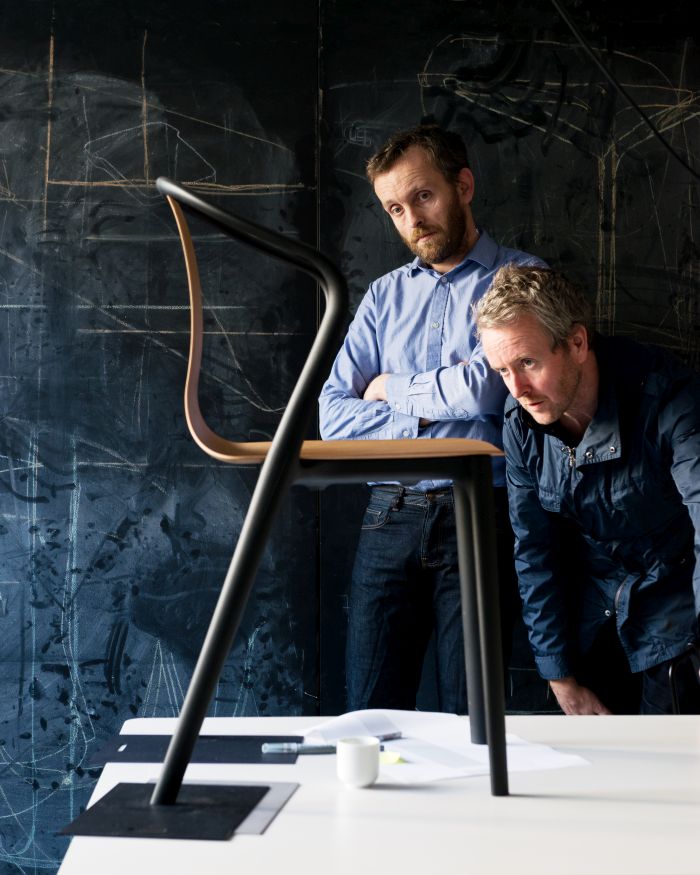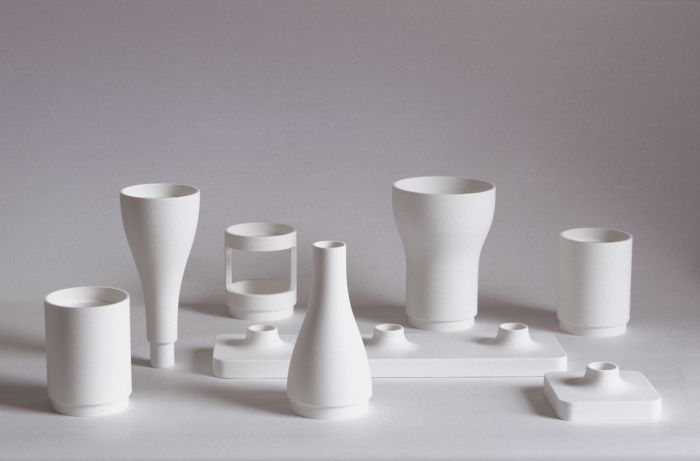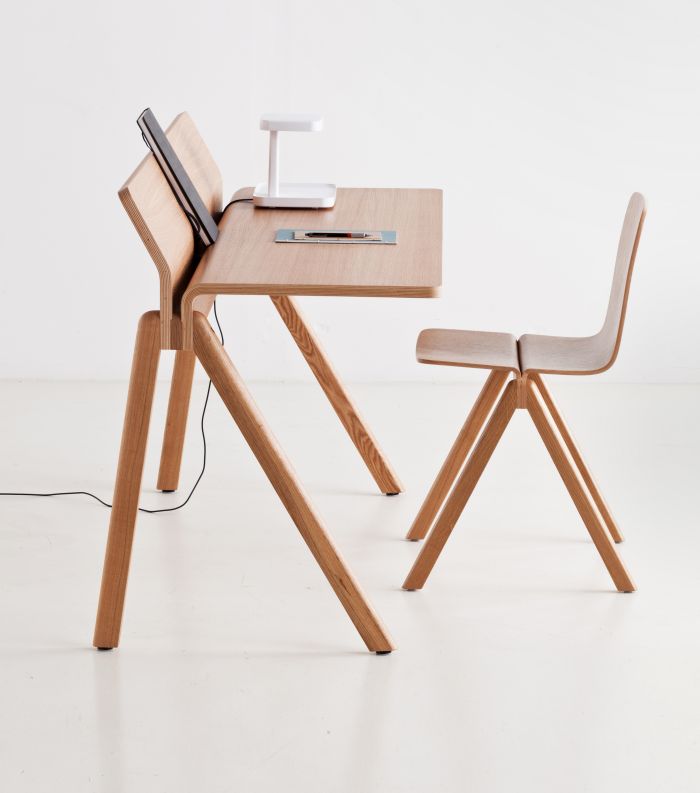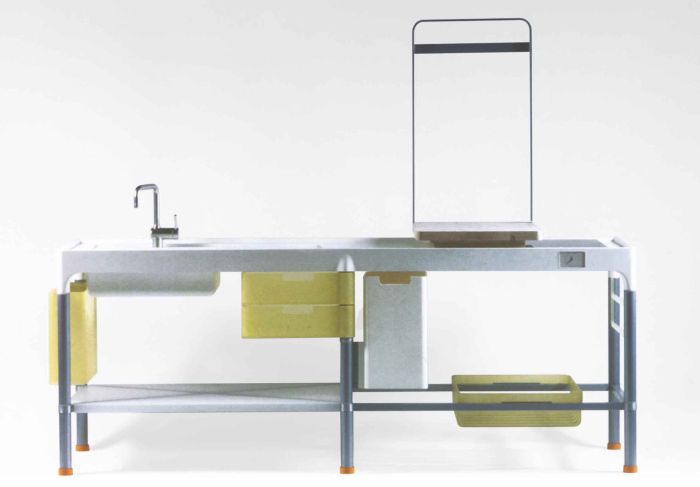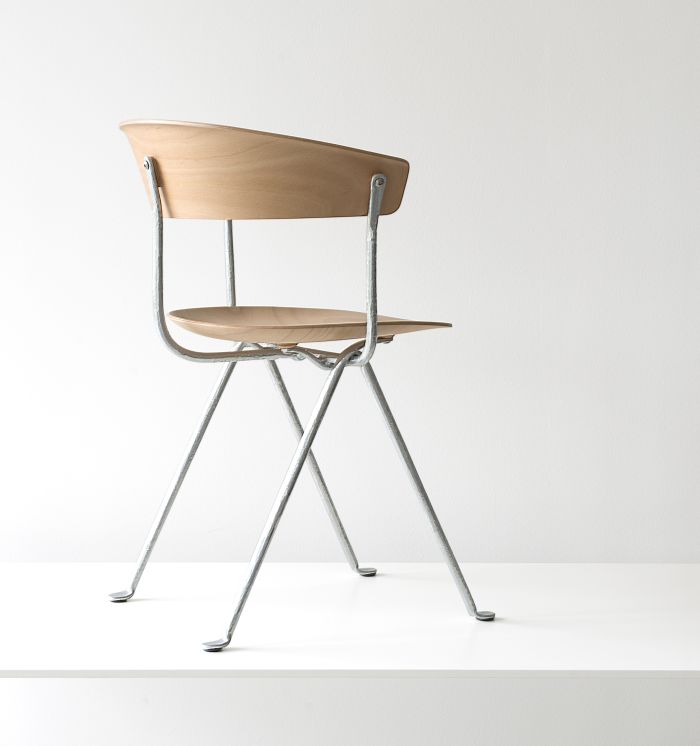smow Blog Interview: Ronan Bouroullec – For me the most important place is to be in front of the sea…
Having grown up near Quimper, Brittany, Ronan Bouroullec moved to Paris in 1989 to study industrial design; since when the French capital has not only witnessed him complete his studies, but establish a studio, achieve his first commercial success and together with his brother Erwan develop projects for a roster of international clients including, and amongst many others, Vitra, Magis, Flos, Kvadrat and Samsung, in addition to realising numerous collaborations with Galerie kreo.
We met up with Ronan Bouroullec to discuss Paris, his experiences in, and relationship with the city, but somehow the conversation kept drifting outwith the city limits…..
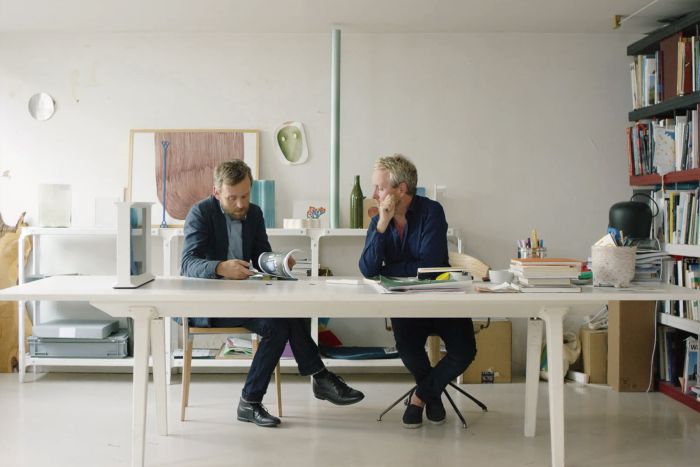
Erwan & Ronan Bouroullec in their studio in Paris Belleville (Photo © and courtesy Studio Bouroullec)
A graduate of first the École nationale supérieure des arts appliqués et des métiers d’art, ENSAAMA, and subsequently the École nationale supérieure des arts décoratifs, ENSAD, Ronan Bouroullec established his own studio in 1991 in Saint-Denis on Paris’s northern periphery. Initially focussing on household accessories and similar smaller objects, a Carte Blanche grant in 1997 from the French furniture industry association VIA enabled Ronan to realise his Cuisine désintégrée modular kitchen concept, the project which brought him to the attention of Giulio Cappellini and which, in effect, marks the start of his international career.
After ten years in Saint-Denis, a decade which saw younger brother Erwan formally join the studio, Ronan returned to Paris, moving through various arrondissements before settling in the city’s Belleville district.
We met up with Ronan Bouroullec in his Belleville atelier to discuss his relationship to Paris, his experiences as young designer in the city, but began by asking how, why, he came to swap Brittany for Paris….
Ronan Bouroullec: I feel very connected to Brittany, but I knew from quite an early age I wanted to be designer and that in order to do that I would have to leave, it was the days before the internet and so you had to physically be places and that meant Paris.
smow Blog: When you say you knew from quite an early age you wanted to be a designer, from where did that come come….?
Ronan Bouroullec: The Fine Art School in Quimper had courses for children which I attended from the age of 6 and which I loved, and then I started studying applied art in Brittany when I was 15, which was a liberating experience. I’d had a terrible time at school, I wasn’t a bad student, wasn’t good, just didn’t get on with school, but then the Applied Arts School was like a rebirth, the school was very open, with very good teachers and there I learned all manner of new things, for example, photography, how to develop my own photographs and I knew that that was what I wanted to do, to create, to design and so when I was 18 I moved to Paris to study Industrial Design at the ENSAAMA, which was a disaster
smow Blog: Academically or…?
Ronan Bouroullec: The school had a good reputation, but industrial design was taught in a terrible, grey, way, without any meaning. It was just designing machines, learning how to draw in a very specific, technical way, all very focussed on training designers to work in large industrial companies, which is an interesting subject, but the way it was taught was uninteresting. However, looking back it was an important experience. I had been so happy to arrive in Paris, was so passionate, and then didn’t understand what had happened, had no words for what I experienced, and so I started to do my own things, to draw what I wanted, how I wanted and ultimately the fact that I was so unhappy forced me at this period to start to develop my own projects.
smow Blog: And outwith the school was there a good creative atmosphere in Paris….?
Ronan Bouroullec: Yes, for example, the Centre Georges Pompidou at that time was a marvellous institution full of life, anarchy, passionate debate, similarly the Centre de création industrielle, CCI, while in those days the VIA was an exciting institution hosting regular events and where there was the opportunity to meet other designers, see what other designers were doing, and through such experiences I understood that beyond the greyness of the school there were other directions and possibilities.
smow Blog: Can one therefore say that it was the creative atmosphere in Paris and not the school per se that helped shape you at that period?
Ronan Bouroullec: I think so, it was an almost baroque period, where you could glue a stone to a piece of glass and call it an object. It was a very free period, largely because it wasn’t about industrial design, it was all about objects and there are limitless ways to realise objects. At that period design wasn’t yet an adjective but was in the process of becoming one, and so it was all very free.
smow Blog: Then given your experiences at ENSAAMA why the decision to enrol at ENSAD?
Ronan Bouroullec: During the two years at the ENSAAMA I realised that school was not for me. Between 15 and 18 I had been so happy, it was a real golden period, and then in Paris school again became this terrible place for me where you waste your time doing senseless things and where there is no life. However I graduated, and then enrolled in the ENSAD largely because it allowed me to remain in Paris developing my own projects, my parents were happy because I was a student, but I only attended very rarely, and was mainly busy with establishing my own studio. My first group exhibition was when I was 19, the feedback was positive and following that I started to seriously develop my own projects.
smow Blog: And at that time were there partners for a young designer here in the city?
Ronan Bouroullec: Because I was, theoretically, a student at the École, I could use the workshops which was very important in helping me to develop my ideas. There were a lot of very small Edition companies in Paris then, normally just one or two people producing objets, and I had some contact with them and realised several small projects which brought me a little bit of attention. However more importantly, at that period in France there were craftsmen everywhere, which is something we have a lot less of today, and so I was developing my ideas in Paris and craftsmen in Brittany were then making them for me, and those first five years of developing small objects was a very good learning process for me.
smow Blog: You said earlier that at that time design wasn’t necessarily about industrial production, but was that an aim for you, was it something you concerned yourself with
Ronan Bouroullec: I have always been interested in series production, but I am very pragmatic, and in my early 20s concentrated on those possibilities and options available to me, and industrial production was another question. I had it in mind, but it simply wasn’t possible. Also because in Paris there were no large manufacturers, and again there was no internet so you had to send drawings by post, it wasn’t as easy as it is today. When I was living in Saint Denis I bought a fax machine and thought I was James Bond!
smow Blog: A high-tech connection to the outside world…..
Ronan Bouroullec: …..exactly, and, for example, I still remember very clearly getting the fax from Cappellini asking me if I’d be interested in working with them, seeing first the company logo and then following the text slowly coming out and then finally Giulio’s signature at the bottom. It was another world.
smow Blog: You’ve been here now almost thirty years, as a designer is Paris a good city to be based?
Ronan Bouroullec: It’s a good city for me to be a designer in that we are in the suburbs of the design world, there is nothing interesting here, I wouldn’t call Paris a creative city, at least not anymore, but that is perfect for me. I don’t know why, maybe because I am shy, but I have never felt the necessity to be surrounded by designers and a community of creatives, I’ve never liked to discuss my work with colleagues, which in a way is why Saint-Denis was a good base, in a way it protected me from the distractions of the city.
smow Blog: And that despite the creative atmosphere in the city?
Ronan Bouroullec: I visited discussions, exhibitions, events, but I don’t have a need to be amongst other creative people, and before moving to Saint-Denis I had a small room of nine square metres and I spent a lot of my time in my room drawing, in a way I came from the countryside where I spent a lot of time in my room drawing, to the city where I spent a lot of my time in my room drawing. I need to be able to fully concentrate when I’m working, to focus on the project before me, and don’t like distractions.
smow Blog: Which we also presume means you wouldn’t consider moving to, for example, Milan?
Ronan Bouroullec: Milan? Never. When I started working with Cappellini, for example, it was suggested that I join Piero Lissoni’s studio, who at that time worked closely with Capellini, but I don’t want to work for other people and so it was never an option for me. But in any case I couldn’t imagine being happy anywhere with too many creative people, Paris is a small city, and is an expensive city, and so many designers either don’t want to be based here or cannot afford to be, but I am very happy.
smow Blog: And generally happy with Paris? After so long here do you feel Parisian?
Ronan Bouroullec: I have a very bizarre relationship with Paris, I always say I don’t like Paris, but I’ve been here for almost thirty years and so maybe it’s not that bad a city to live in! Whenever I visit Brittany I always say I am home, I still feel very Breton, and need to go back regularly, yet I lived 18 years in Brittany and have now lived 28 years in Paris, but there is still a lot that frustrates me about the city, for example the fact that is so protected it never changes. A city like London is in permanent movement, every time you visit there is something new, a constant evolution. Paris is always the same. And when they do build new buildings they are so limited by the strict rules that nothing interesting can develop, and that is frustrating. I however am a very black and white person, I work in Paris and I am very happy with the situation, but no, I’m not a Parisian.
smow Blog: So the Belleville in the Belleville Chair can’t be considered an homage to the district here, or……?
Ronan Bouroullec: Giving a name to an object is always the most painful part of a process, we always put it off as long as possible, and Belleville, because, yes, the studio is here, but much more because there is a certain musicality in the word Belleville, it swings and moves in a manner very similar to the chair. But I do like this neighbourhood a lot, it is a very specific one, it is quite central, is an incredible mix of Arabic, Chinese, and at the same time a lot of young architects, and I quite like this mix, it makes for a very interesting, lively, neighbourhood, and when I leave Paris almost the only thing about the city I miss are the Chinese restaurants here in Belleville.
smow Blog: Briefly to end, we have to ask, after all we’ve discussed, would moving the studio to Brittany be an option?
Ronan Bouroullec: I could, but I am married to the most Parisian woman I know. She was born here, knows every street, every building, is passionate about the city, if she is out of Paris for too long she is like a flower without soil. She is the first person I’ve ever met who needs the city, needs the hectic, noise and movement of the city. For me however the most important place is to be in front of the sea, standing before this panorama, for me it is full of imagination, is the starting point of something.
Further details on the work of Ronan and Erwan Bouroullec can be found at www.bouroullec.com
Tagged with: Belleville, Paris, Ronan and Erwan Bouroullec, Vitra
